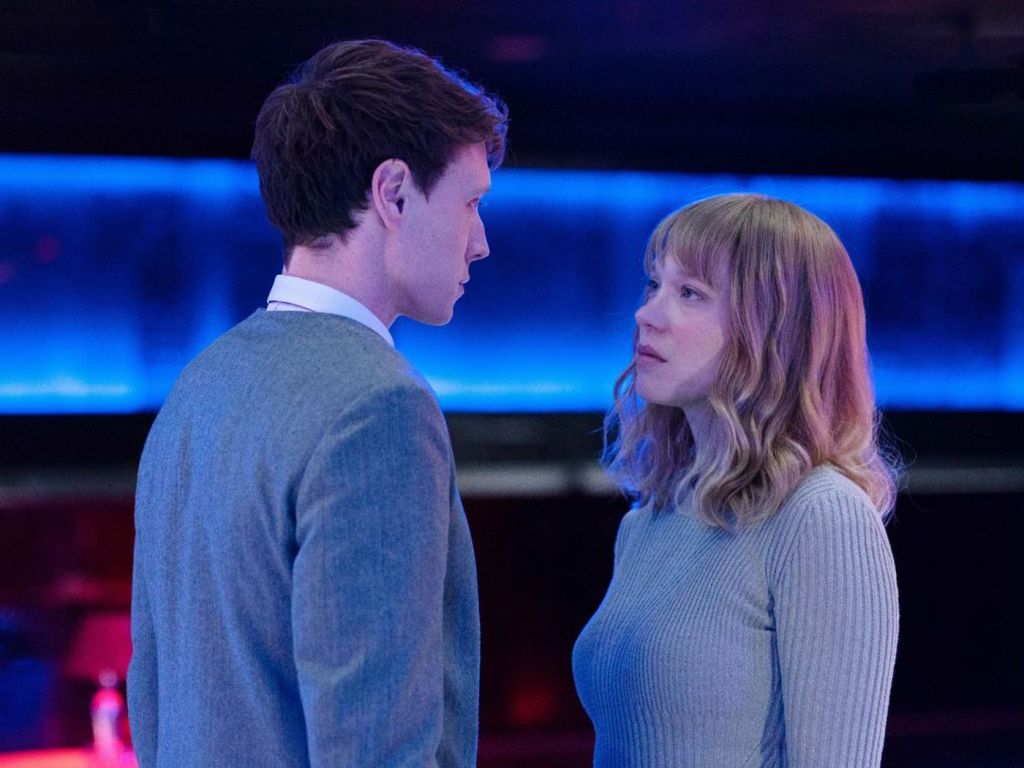Year: 2023
Runtime: 145 minutes
Writer/Director: Bertrand Bonello
Actors: Léa Seydoux, George Mackay, Guslagie Malanda
By Caz Armstrong
Loosely based on Henry James’s novella, “The Beast in the Jungle”, “The Beast” is a disparate film held together by Léa Seydoux’s central performance. It’s beautiful in places but the story makes little sense and leans too far towards blaming women for violent behaviour perpetrated against them.
Gabrielle (Léa Seydoux) lives in 2044 where AI has evolved from helpful algorithmic companion to practically human overlord. Cities are empty and the only way to maintain a fulfilling job and life is to cleanse your DNA of all its historic clutter, remove emotion and become one with AI.
This premise sounds very intriguing. Perhaps it might touch on generational trauma and how it affects women and minorities. Maybe it will focus on giving more and more of ourselves to technology, losing our history and personalities.

Instead this is a confusing timeline of Gabrielle’s ongoing love affair with Louis (George McKay), while being haunted by a looming sense of doom. A promising start quickly becomes frustrating and bewildering, providing more loose ends than we could hope to tie together. The heavy-handed motifs and continued time hopping means any message it does have is lost in its telling.
If you revel in puzzlement, finding meaning, digging deeper and unravelling filmic webs you’ll be in your element. There’s certainly a lot here for you to argue about in the pub afterwards. However, most will probably find it frustrating.
Visually speaking, there’s a lot to admire. The film covers eras from the opulent 1910s, affluent yet isolated 2014, 80s nightclubs, and a sci-fi near future. The costumes range from minutely intricate to statement pieces, particularly in the 1910 era of the film. Many of these handmade pieces are stunning in their detail.
Colour tones are often desaturated, with all vibrancy removed. But at times earth tones give way to flashes of brighter, warmer colours, just a suggestion of something different about Gabrielle. Where real life persists the colours are dialed up.

However, you won’t see costume designer Pauline Jacquard or any of the other talented crew members’ names in the credits without scanning a QR code at the end. It’s on brand for the film but would be a tough pill to swallow for hundreds of crew members.
From a performance perspective Seydoux shows great strength. She has the ability to control and time her emotions, metering out the changes to hit beats just perfectly. Performing in both French and English, she is also alone for much of the film, holding scenes together by herself.
She delivers across a huge range of circumstances, given the timeline of the film. From blank-faced as a doll to screaming with all the passion of someone who’s lost everything, Seydoux is the cornerstone of this film.
Despite George McKay’s great performance, “The Beast” is far too forgiving of his character Louis, whose 2014 persona was inspired by a real-life serial killer. It blames his angry, predatory and violent incel behaviour on a woman’s actions from a past life. Apparently he just needs to be loved by a woman and then he wouldn’t be such an angry and violent person.
This stance is pretty disgusting given the level of hatred and violence against women incels continue to perpetrate. Incel behaviour is never women’s fault and women are not responsible for changing it.
The beast-like feeling of dread which follows Gabrielle through eras is described by director Bertrand Bonello as ‘a fear of loving’. If we’re being generous we could read it as a fear of loving Louis in particular, given what a bad choice he is. But it’s more easily read as a fear of the harm men can do to women, or a kind of existential dread persistent in humanity throughout time. Either way it’s bleak.


